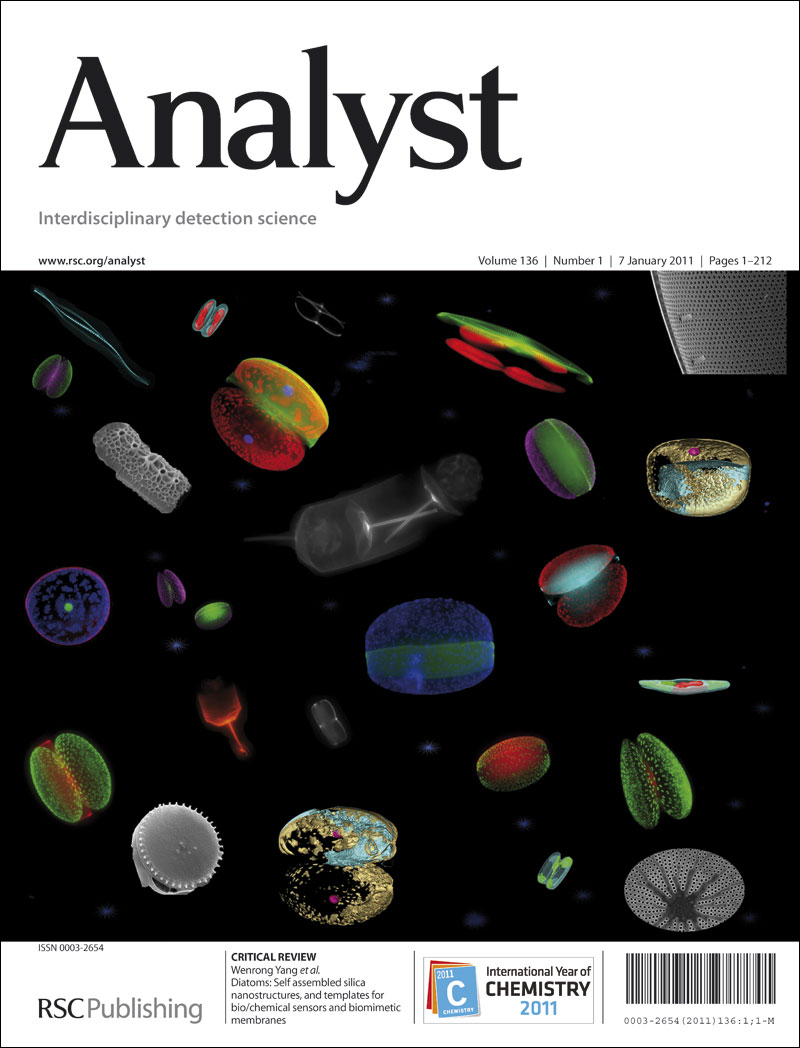Cascade Signal Amplification-Based Fluorescent Biosensor Utilizing Exonuclease III and Self-Locking DNAzyme Synergy for microRNA Detection
IF 3.3
3区 化学
Q2 CHEMISTRY, ANALYTICAL
引用次数: 0
Abstract
MicroRNAs (miRNAs), as pivotal regulators of gene expression, are critically associated with the progression of cancer, neurodegenerative, and cardiovascular diseases. However, their detection remains challenging due to low sensitivity, background noise, and matrix interferences in complex biological samples, hindering clinical applications such as early tumor screening and liquid biopsy. Herein, we present a cascade-amplified fluorescence biosensor driven by the synergistic integration of exonuclease III (Exo III) and self-locking DNAzyme (SLD). This strategy exploits Exo III-mediated cyclic digestion of target-induced DNA/RNA heteroduplexes to release multiple signal conversion chains, while the SLD’s rigid conformational gate suppresses nonspecific catalysis until unlocked by target-specific molecular keys. The activated DNAzyme then drives secondary amplification through iterative cleavage of fluorophore-labeled reporters. This dual-amplification mechanism achieves label-free, isothermal detection of miRNA-155 with a linear range of 50 fM–10 pM and a limit of detection (LOD) of 4.96 fM. Notably, the sensor demonstrates robust specificity in serum matrices, effectively overcoming homologous miRNA cross-reactivity and complex biological interferences. By merging target recycling with conformation-gated catalysis, this platform offers a cost-effective, high-precision solution for miRNA profiling, holding significant promise for point-of-care diagnostics and liquid biopsy-based early cancer detection.基于级联信号放大的荧光生物传感器,利用外切酶III和自锁DNAzyme协同作用进行microRNA检测
MicroRNAs (miRNAs)作为基因表达的关键调控因子,与癌症、神经退行性疾病和心血管疾病的进展密切相关。然而,由于复杂生物样品的低灵敏度、背景噪声和基质干扰,它们的检测仍然具有挑战性,阻碍了早期肿瘤筛查和液体活检等临床应用。在此,我们提出了一种级联放大的荧光生物传感器,由外切酶III (Exo III)和自锁DNAzyme (SLD)的协同整合驱动。该策略利用Exo iii介导的靶标诱导的DNA/RNA异双链的循环消化来释放多个信号转换链,而SLD的刚性构象门抑制非特异性催化,直到被靶标特异性分子键解锁。激活的DNAzyme然后通过荧光团标记的报告蛋白的迭代裂解驱动二次扩增。该双扩增机制实现了对miRNA-155的无标记等温检测,线性范围为50 fM - 10 pM,检出限(LOD)为4.96 fM。值得注意的是,该传感器在血清基质中表现出强大的特异性,有效克服了同源miRNA交叉反应性和复杂的生物干扰。通过将目标回收与构象门控催化相结合,该平台为miRNA分析提供了一种经济高效、高精度的解决方案,对即时诊断和基于液体活检的早期癌症检测具有重要意义。
本文章由计算机程序翻译,如有差异,请以英文原文为准。
求助全文
约1分钟内获得全文
求助全文
来源期刊

Analyst
化学-分析化学
CiteScore
7.80
自引率
4.80%
发文量
636
审稿时长
1.9 months
期刊介绍:
"Analyst" journal is the home of premier fundamental discoveries, inventions and applications in the analytical and bioanalytical sciences.
 求助内容:
求助内容: 应助结果提醒方式:
应助结果提醒方式:


